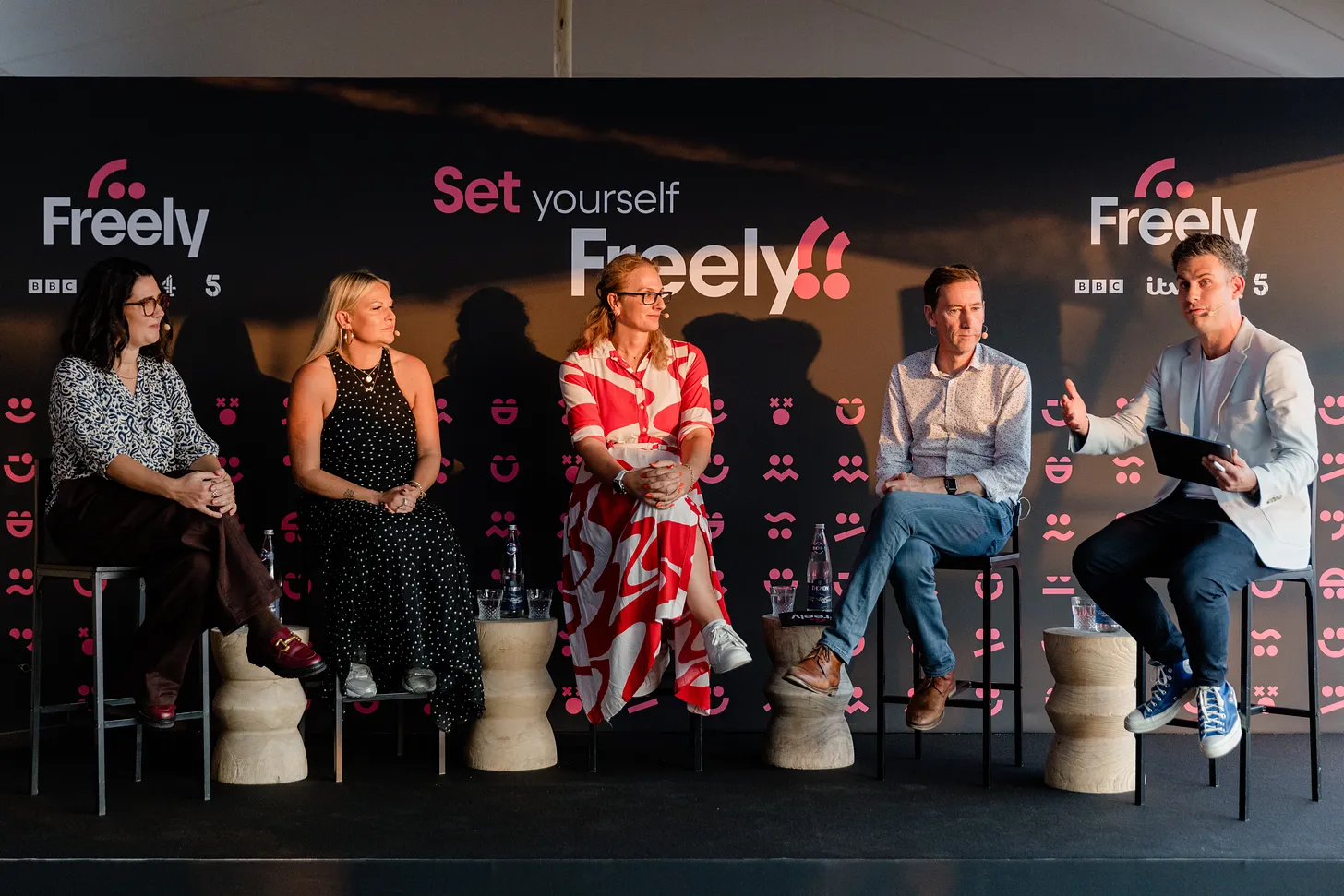Why TV values still matter in the streaming age
Hello everyone — my name is Omar Oakes, a journalist and commentator who is obsessed with the business of media and advertising and how they intersect with power.
I’m lucky to do what I do. I love reporting on media because the more media we have, the more informed we are, the more understanding we are, and frankly, the funnier we are. For the last decade, that’s how I’ve explained why I do what I do — and it’s still true. But in recent years I’ve also become a dad, and I’m increasingly obsessed with how my own children use media.
That reflection made me realise something about my own childhood: I watched an insane amount of TV.
This was in the 1990s, just before everyone had the internet. So it’s no surprise that one of my favourite TV lines is from Friends, when the otherwise clueless Joey says something unexpectedly profound. Upon meeting someone who doesn’t own a TV, he asks, earnestly: “You don’t have a TV? What’s all your furniture pointed at?”
And Joey’s right, isn’t he? For decades, most of us have literally arranged our homes around the biggest rectangle in the house. The TV is our modern campfire — the place where we sit together and experience shared stories.
Television has values.
So here’s why those values still matter, even as the way we watch TV changes — and why this moment could be the best opportunity in a generation for broadcasters to win in the streaming age.
TV’s unfair advantage: values
Even though the way we watch TV has changed, what audiences value about it has not.
I think about that often when people say “the definition of TV is changing.” YouTube came to Cannes earlier this year to tell the world’s advertising community that “YouTube is the new TV.” They’re back at MIPCOM this week with their first major presence at the Palais.
Of course, we can now stream great content on our phones thanks to brilliant independent creators. TV companies would be foolish not to look at YouTube’s massive global reach and consider it another distribution platform. But television, in its truest sense, is more than a device. It’s a set of values based on shared experience — very different from a platform where an algorithm serves us content while we’re alone with our phones.
People still connect most deeply with stories that reflect their lives, that bring them together, and that feel credible.
Across Europe, audiences say free-to-air broadcasters — many represented at MIPCOM this week — are the ones that represent their communities and create moments that stick in national memory. In the UK, when viewers are asked to name those moments, they’re twice as likely to pick a show from one of the major free-to-air broadcasters — the BBC, ITV, Channel 4 or Channel 5 — as from a streamer.
Audiences don’t just watch TV; they identify with it. They believe it. That’s important for producers, advertisers and partners — anyone who wants audiences to think, feel and remember, not just “watch.”
That belief isn’t just cultural power. Commercially, it’s an unfair advantage.The challenge: fragmentation and discovery
What’s becoming less of an advantage, however, is great content.
If you’re like me, you probably spend more time scrolling through Netflix than actually watching Netflix. These endless content libraries have given us a strange kind of fear of missing out — pushing us to keep searching a little bit longer for the perfect show.
TV doesn’t have a content problem. It has a discoverability problem.
Audiences now juggle more platforms than ever, and discoverability has become its own kind of tax. Manufacturers, app stores and aggregators are the new gatekeepers, deciding what gets seen and what gets buried. That creates an opportunity for rent-seeking.
That’s why collaboration matters. Everyone benefits when media owners align on standards and visibility.
Competing on content, collaborating on standards.
It helps audiences, advertisers and the wider creative economy maintain a sustainable TV ecosystem.
It’s also why prominence matters — and why laws like the UK’s 2024 Media Act are so significant.
For the first time, the law guarantees prominence for public-service broadcasters on connected TVs, ensuring that as viewing shifts online, high-quality broadcaster content remains visible and easy to find.
The opportunity for broadcasters
These are not easy challenges to solve. But if broadcasters get them right, the rewards will be huge.
Amid the shift to streaming, broadcasters have a unique opportunity. Younger audiences still want trusted, free, high-quality content — they just expect to access it flexibly. It’s no surprise that, according to Everyone TV’s data, Freely already reaches more than half a million weekly users less than a year after launch, many of them aged 16–34.
Why is that? Isn’t this a TikTok, low-attention-span generation? Think again about why stories resonate — why we sat around as cavepeople sharing stories, and why I sat around in the ’90s watching TV. We come back to one thing: trust.
And that’s only going to become more important as more content is created by AI.
If I can make one prediction, it’s this: in five years, trust will be the ultimate differentiator — not just in TV, but across all media.
As AI makes it easier to fake, fabricate and flood our feeds, audiences won’t just ask “Is this video good?” — they’ll ask “Is this video even real?”
That’s where broadcasters have a once-in-a-generation opportunity. Verification, editorial judgment and accountability won’t just be “nice to haves” — they’ll be the new currency of trust.
Holding on to the advantage
Like every parent, I’m struggling with how my kids navigate this noisy media world, which is so different from when we were their age.
We know TV can’t go back to the good old linear days. The question is how to take the best of what television has always been — those values of trust, quality and shared experience — and build a sustainable, exciting future around them.
If broadcasters can get discovery right, collaborate while competing, and hold on to television’s unfair advantage, free-to-air TV will become more than just a rectangle in the living room with an internet connection.
It will be a beacon of trust and quality in a noisy, AI-driven world.
 A heavyweight panel discussed the future of streaming and free-to-air TV (L-R): Karla Berry (Channel 4), Lucy Halliday (AMC Networks), Julie Mitchelmore (Hearst Networks EMEA), Jonathan Thompson (Everyone TV), Omar Oakes
A heavyweight panel discussed the future of streaming and free-to-air TV (L-R): Karla Berry (Channel 4), Lucy Halliday (AMC Networks), Julie Mitchelmore (Hearst Networks EMEA), Jonathan Thompson (Everyone TV), Omar OakesSource: omaroakes.substack.com

